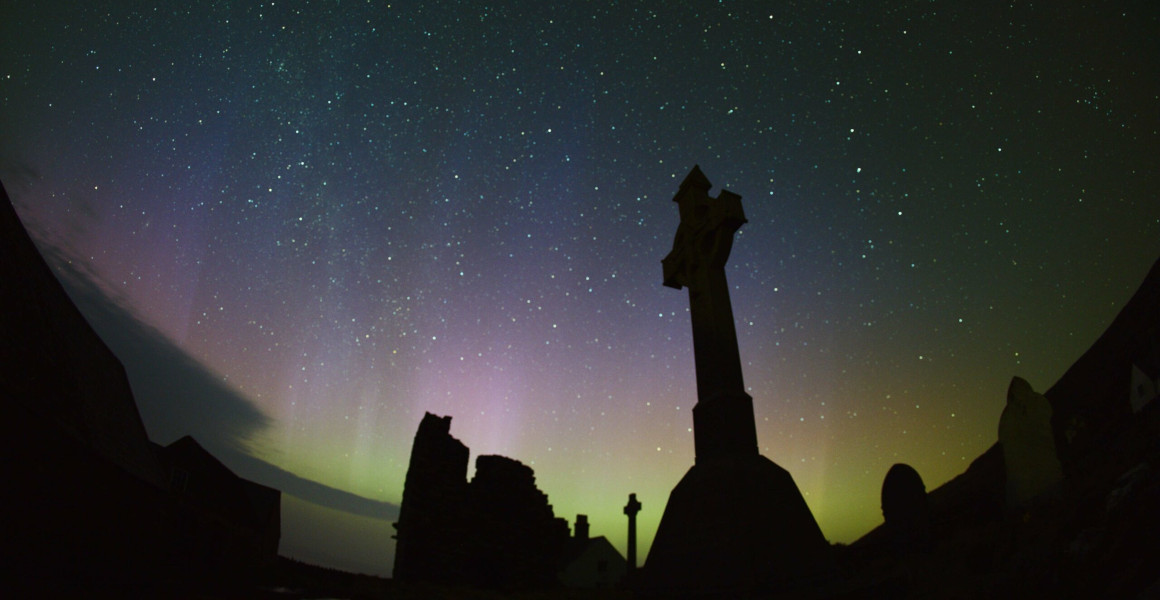The night skies above a Welsh island have been recognised as some of the best in the world.
As light pollution continues to increase around the world, the stars above Ynys Enlli remain much as our ancestors would have seen them.

The night skies of Ynys Enlli have been named a Dark Sky Sanctuary after four years of assessment. Image © Steve Porter
The night skies above a Welsh island have been recognised as some of the best in the world.
As light pollution continues to increase around the world, the stars above Ynys Enlli remain much as our ancestors would have seen them.
A Welsh island has been recognised as having some of the darkest skies in the world.
Ynys Enlli, also known as Bardsley Island, is located two miles off the Llŷn Peninsula. Its isolation has long been recognised, with a number of religious sites established there since the sixth century AD.
Its pristine nights have now led to it being named a Dark Sky Sanctuary by the International Dark Sky Association (IDSA), making it just one of 17 sites around the world to have this status.
Sian Stacey, Chair of the Bardsey Island Trust, says she was 'delighted' by the decision.
'It is a huge achievement, and I would like to thank all who have been involved,' Sian says. 'It's the culmination of several years of hard work involving our own team as well as our partners across the region and beyond.
'There's no doubt that achieving this prestigious status for Ynys Enlli will raise the profile of the island as a unique place in Wales and amongst the best in the world to appreciate the night sky. We hope it will also go a long way in securing the long-term sustainability of the island.'
Mari Huws, one of the island's wardens, adds, 'Living here, I am always in awe of the island's beauty, and the night sky is very much a part of that.'
'In a world that's increasingly being polluted, it's a privilege to be able to work towards protecting something that is pristine for future generations.'
The announcement follows recent research that reveals the night skies are becoming around 10% brighter every year, which can have impacts on the health of humans and wildlife.

Ynys Enlli's mountain shields the island from most of the light coming from the Welsh mainland. Image © JuliusKielaitis/Shutterstock
Dark Sky Places are sites recognised by the IDSA which aim to limit the impact of light pollution on the night sky. There are five different categories, ranging from urban areas that aim to reduce light lost into the sky, to some of the darkest places on Earth.
The lowest tier of Dark Sky Places are Dark Sky Communities, which are towns, cities and other areas that take steps to only use lighting that limits light pollution, as well as educate its residents about the importance of night skies.
Built-up areas can also be recognised as Urban Night Sky Places, which are large open spaces such as parks that are designed to minimise the amount of light pollution.
The top three tiers are the most stringent and recognise areas with 'an exceptional or distinguished quality of starry nights.' Dark Sky Sanctuaries, such as Ynys Enlli, are often found in some of the most remote areas of the world where there is very little threat to the night sky.
While Ynys Enlli isn't that far from the mainland, the island's mountain provides a natural barrier against light coming from that direction. Instead, the closest source of light pollution is said to be from Dublin, more than 110 kilometres away.
The island's recognition as a Dark Sky Sanctuary, which took four years of assessment, makes Ynys Enlli the first place in Europe to receive such recognition. It is hoped that it will help to protect the island's colony of Manx Shearwaters, among other animals.
Though Ynys Enlli is the first Dark Sky Sanctuary in the British Isles, it is not the first British site to receive this status. That honour belongs to the British Overseas Territory of the Pitcairn Islands, located in the south Pacific, which was recognised in 2019.
Other Dark Sky Places in the UK include England's South Downs, Scotland's Cairngorms National Park, Northern Ireland's Davagh Forest and the island of Sark in the Channel Islands.

Discover more about the natural world beyond Earth's stratosphere.
Don't miss a thing
Receive email updates about our news, science, exhibitions, events, products, services and fundraising activities. We may occasionally include third-party content from our corporate partners and other museums. We will not share your personal details with these third parties. You must be over the age of 13. Privacy notice.
Follow us on social media